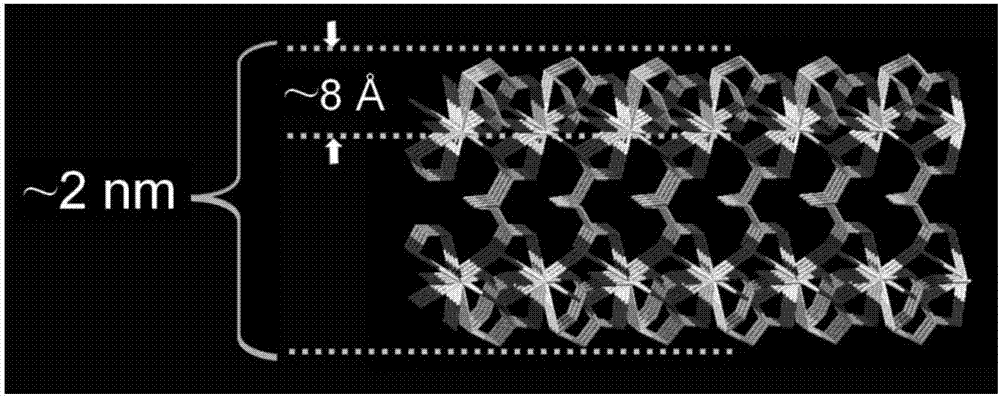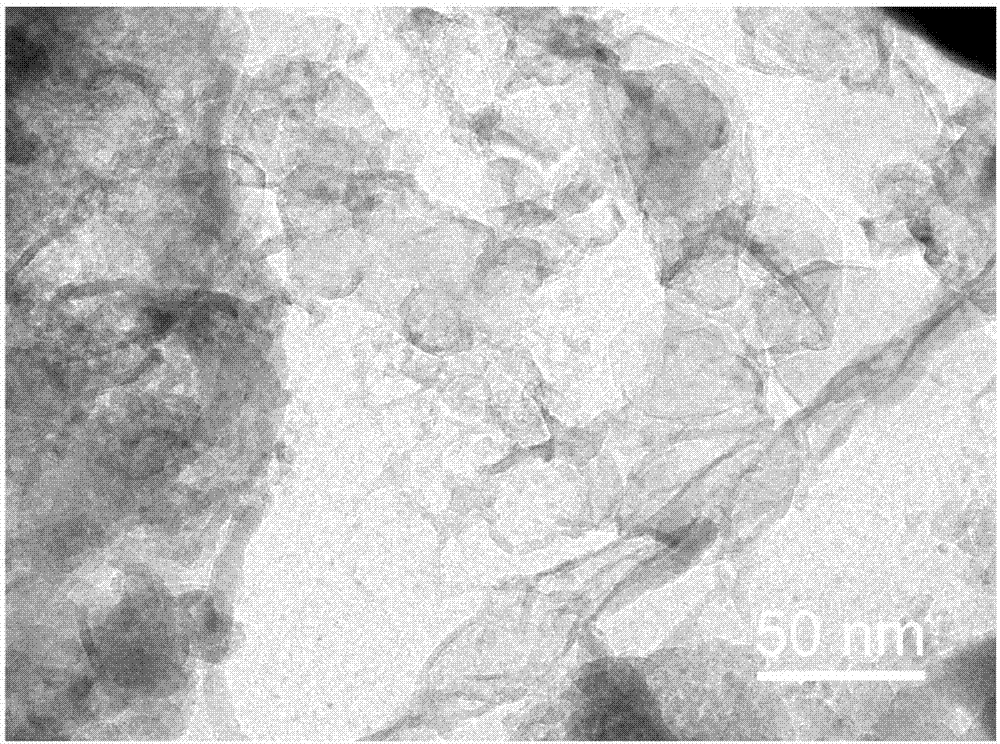Fluorescent nanoprobe, preparation method thereof and application thereof in biosensor
A fluorescent nanoprobe and nanomaterial technology, applied in biosensing applications, fluorescent nanoprobes and their preparation fields, can solve problems such as cell or tissue damage, toxicity, and difficulty in metabolism, and achieve simple preparation methods, cellular Low toxicity, accurate qualitative and quantitative effects
- Summary
- Abstract
- Description
- Claims
- Application Information
AI Technical Summary
Problems solved by technology
Method used
Image
Examples
Embodiment 1
[0042] 1: Preparation of MOF-La crystal
[0043] (1) In 15 mL of NaOH solution (100 mM), add 120 mg (0.8 mmol) of 2,2′-thiodiacetic acid and dissolve by ultrasonication. Then add 173 mg (0.4 mmol) La(NO 3 ) 3 ·6H 2 O, shake to dissolve. The obtained solution was transferred to the polytetrafluoroethylene liner of the reaction kettle, the reaction kettle was sealed, put into an oven, heated at 150°C, and reacted for 15 h. After the reaction, the reactor was cooled down to room temperature to obtain MOF-La crystals, whose morphology was as follows: figure 1 shown. structured as figure 2 shown.
[0044](2) Add the MOF-La (5 mg) obtained from the above reaction into 2 mL of ethanol, sonicate for 30 min with a cell disruptor, and centrifuge at 8000 rpm to obtain the initially stripped MOF-La. Then the MOF-La was dispersed in 10 mL of n-butyllithium hexane solution (0.16 M), under nitrogen protection, and stirred for 20 h at 25 °C to obtain the exfoliated two-dimensional M...
Embodiment 2
[0053] (1) In 15 mL KOH solution (70 mM), add 77 mg (0.45 mmol) 2,2′-sodium thiodiacetate, dissolve and add 130 mg (0.225 mmol) La 2 (SO 4 ) 3 dissolve. Then heated at 120°C and reacted for 10 h. After the reaction, the temperature was lowered to room temperature to obtain MOF-La crystals.
[0054] (2) Add MOF-La (5 mg) obtained from the above reaction into 2 mL of n-hexane, sonicate for 35 min with a cell disruptor, and then centrifuge to obtain MOF-La that has been preliminarily stripped.
[0055] (3) Disperse the preliminarily stripped MOF-La in 10 mL of n-butyllithium cyclohexane solution (0.16 M), protect it with helium, and stir the reaction for 25 h at 30°C to obtain the stripped Two-dimensional MOF-La.
[0056] (4) Disperse 0.2 mg of two-dimensional MOF-La in 1 mL of PBS (0.01 M, pH 8.0), add 2 µL of FAM-P (25 µM) and stir the reaction at room temperature, then centrifuge at 14000 rpm to obtain nucleic acid suitable Body-modified two-dimensional MOF-La.
Embodiment 3
[0058] (1) In 15 mL KOH solution (90 mM), add 154 mg (0.9 mmol) 2,2′-sodium thiodiacetate, dissolve and add 227 mg (0.525 mmol) La(NO 3 ) 3 ·6H 2 O dissolved. Then heated at 180°C and reacted for 30 h. After the reaction, the temperature was lowered to room temperature to obtain MOF-La crystals.
[0059] (2) Add the MOF-La (5 mg) obtained from the above reaction into 2 mL of ethanol, sonicate for 25 min with a cell disruptor, and then centrifuge to obtain the initially stripped MOF-La.
[0060] (3) Disperse the preliminarily stripped MOF-La in 10 mL of n-butyllithium cyclohexane solution (0.16 M), protect with argon, and stir for 15 h at 20°C to obtain the stripped Two-dimensional MOF-La.
[0061] (4) Disperse 0.2 mg two-dimensional MOF-La in 1 mL Tris-HCl buffer (0.01 M, pH 6.0), add 2 µL TAMRA-P (25 µM) and stir the reaction at room temperature, then centrifuge at 14000 rpm, Two-dimensional MOF-La modified by nucleic acid aptamer was obtained.
PUM
| Property | Measurement | Unit |
|---|---|---|
| thickness | aaaaa | aaaaa |
| thickness | aaaaa | aaaaa |
Abstract
Description
Claims
Application Information
 Login to View More
Login to View More - R&D
- Intellectual Property
- Life Sciences
- Materials
- Tech Scout
- Unparalleled Data Quality
- Higher Quality Content
- 60% Fewer Hallucinations
Browse by: Latest US Patents, China's latest patents, Technical Efficacy Thesaurus, Application Domain, Technology Topic, Popular Technical Reports.
© 2025 PatSnap. All rights reserved.Legal|Privacy policy|Modern Slavery Act Transparency Statement|Sitemap|About US| Contact US: help@patsnap.com



